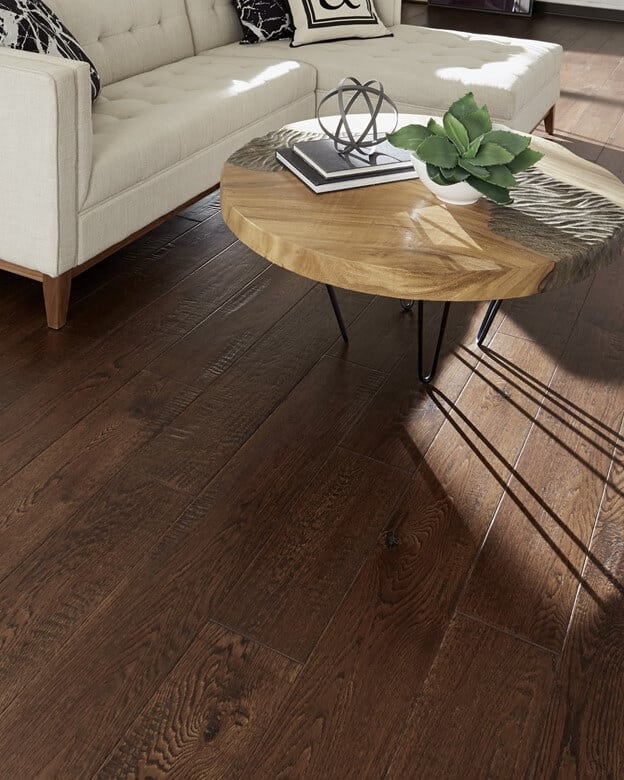There are a lot of types of wood. Like, a lot. So many that the process of selecting wood flooring can be overwhelming. Classic Wood Floors is here to go over a few (by no means all) of the most popular types and define wood characteristics so you have a better understanding of what sets them apart.
Cherry Wood Floors

Cherry wood is a medium density wood. It has good bending properties, low stiffness, and moderate strength and shock resistance. The wood itself is straight-grain with a smooth, satiny texture. You may find brown pith flecks and small gum pockets. Insofar as color, you hear cherry, you think red. And for the most part, when it comes to cherry wood, that’s on the money.
Cherry heartwood covers a range of red, from lush red to reddish brown. If you’re interested in softer tones but have your heart set on cherry, cherry sapwood ranges from creamy white to light red-brown.
Maple Wood Characteristics

Between the smoothness of its grain pattern, its impressive durability, and how well it stains, maple is a favorite among many woodworkers. Maple wood does have a wide variety of species, the one you’re most likely to find around here is Hard Maple. Insofar as colors, the sapwood of maple tends to be light with hints of reddish brown, whereas the heartwood is more brownish red and can be quite dark.
Walnut Wood Floors

A tough hardwood with medium density, walnut wood isn’t too stiff, and has moderate bending properties. Its sapwood is light, milky white; the heartwood ranging in shade from light brown to dark chocolate brown. While the wood tends to be straight-grained, you might find some curvy or curly grains to add some character to the overall aesthetic. It handles both paint and stain exceptionally well.
Oak Wood Characteristics

Hard, heavy, and durable, oak is wildly popular for a reason. And there are a lot of types of oak within the oak family—white, red, black, pin, water, bur, willow, Spanish, English, live… Okay, you get the picture. Each species of oak has its own inherent strengths that make it the wood of choice for various uses.
What each will have in common, though, is its strength and endurance. It’s water resistant (which made it great for building ships back in the days of yore), and heavier than other hardwood. Like a lot heavier. Depending on what you’re using it for, this can be a good or bad thing. Also, most hardwood will change in appearance over time; in wood, this can result in a two-tone effect, though this process takes a long time.
This, friends, just barely represents the tip of the wood species iceberg. There are so many types, and subtypes among those types, that we could talk about wood characteristics for hours. If you’re shopping for hardwood and want to put that to the test, don’t hesitate to swing by and quiz us on our knowledge of all things wood. We’ll help you decide which wood species makes the most sense in terms of how it looks, how it performs, and how it stands the test of time.
